I love designing adventures! If you’re like me, there’s nothing better than creating a world with words, imagining a maelstrom of conflicts and possibilities into which an unsuspecting group of characters can be thrust. As the words tumble onto the page, the excitement of delivering a great game experience for the players leads me to a deluge of questions and doubts: will this adventure challenge them, delight them, make them think, make them feel, or otherwise deliver on the goals that I set?
Creating an adventure can be one of the greatest joys for a D&D fan, but it can also be challenging and frustrating. With so many great published adventures available, a DM can run campaigns for years and never once have to do more than make a few tweaks. However, seeing the players react to a scenario that you pulled from your own imagination can produce a rush like no other.
Fighting through the struggles of the creative process can be treacherous and frustrating, but the challenge is not insurmountable. I hope that what follows—in this article and in future ones—is a guided tour of the adventure-creation process. I want to walk with you along this path, because I have trod it many times myself, helping others see the wonderful sights and navigate the hidden pitfalls. More importantly, each time I take the journey, I learn something new myself. This is the first part of a much larger series, one which will lay the groundwork for all future installments.
Your Humble Guide
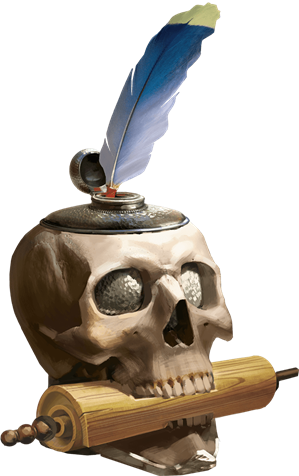 I’ve been running D&D games for almost 40 years, and creating my own adventures for the duration. I’ve been a professional adventure designer for the past 20 years, working for Wizards of the Coast and other RPG companies. If you count my experience being a writer, editor, producer, and administrator for organized-play campaigns like D&D Adventurers League, Living Forgotten Realms, Xen’drik Expeditions, and Living Greyhawk, you could say that I’ve written or been a DM for tens or even hundreds of thousands of players.
I’ve been running D&D games for almost 40 years, and creating my own adventures for the duration. I’ve been a professional adventure designer for the past 20 years, working for Wizards of the Coast and other RPG companies. If you count my experience being a writer, editor, producer, and administrator for organized-play campaigns like D&D Adventurers League, Living Forgotten Realms, Xen’drik Expeditions, and Living Greyhawk, you could say that I’ve written or been a DM for tens or even hundreds of thousands of players.
Those experiences have taught me a great deal about the game, the people who play it, and the process of creating within it. Much of what I’ve learned has come at the expense of getting things wrong. Many times over! Whether I am writing or designing or developing or editing, however, I am always looking to learn the next lesson, hoping to find the new nugget of truth and wisdom that I can carry forward into my next project.
And that’s what brings me to this point today. The fine folks at D&D Beyond asked me if I would be interested in writing a series of articles on adventure design. As I began to outline what would go into such a series, the inestimable Todd Kenreck had a brilliant idea: instead of just talking about how to create an adventure, why not actually create one, step-by-step and piece-by-piece, as I talk about each of the topics.
And so, intrepid adventure designers, that is what we’re going to do! Through the next several articles, I’ll discuss components of adventure design, and along the way we will create an adventure together. I’ll bring up topics and set us on the path, using comments from readers to guide later parts of the series. When we are finished, we’ll have a good strong outline, and maybe even a few complete encounters, from an adventure.
Charting the Course
The most important aspect of adventure design to remember—and to embrace—is that constraints on design are not antithetical to creativity. Self-constrained design is, in a nutshell, the crux of creativity. With approximately 200,000 current or obsolete words in the English language, and even more words when you throw game terms and other fictional fantasy elements into the mix, you want to do everything in your power to gracefully and elegantly limit your choices while not harming the aesthetic or functional value of your work product. That is best accomplished by constraining yourself.
In RPG adventure design, that self-constraint can take many forms. First, you can work within the time-tested and effective structures that have come before. For example, all adventures generally have a few particular sections that appear somewhere in the text. The names and locations of these sections may vary from product to product, but they all contain similar vital information. Adventure Background is one example. In the Adventure Background, we know we are going to provide the reader—and ostensibly the DM who is running the adventure—important information regarding what happened before the action of the adventure takes place. (We’ll talk more about the best way to handle Adventure Backgrounds in a later article.)
Another way to constrain the scope of your work in adventure design is to pick a theme or two that can act as a focus for your efforts. Think of these themes as “creativity magnets,” which can draw ideas out of your mind and onto the page, always driving you in a particular direction. These themes can steer the plot of an adventure, but they are much more powerful that just story beats or plot points. For example, in an adventure I wrote called Defiance in Phlan, one of the important themes was dragons. Yet a dragon does not appear in the adventure at all.
What kept my momentum moving forward during the design of that adventure were draconic themes and details. If I was ever stuck for a detail or a direction, I just focused my mind on dragons, and inevitably something came to me. Because I was focused on that one motif, what came to mind fit nicely with other details, creating a more coherent mosaic from the disparate pieces. Did I need to describe a statue? It was a dragon statue. Did I need a color? It could correspond to a chromatic dragon. Did an NPC need details? She was a merchant who dealt in dragon artifacts.
Of course, the most powerful and useful constraint is the oft-mentioned but sometimes-scorned outline. If you outline your adventure, you remove so much stress and friction from those mental gears, freeing them up to move immediately to the details of your creation. The brilliant part of outlines? They can be malleable! Once you get deep into the word mines, you might strike a completely different vein of gold. It’s fine to scrap the old outline and follow that new path, because your new ideas already have constraints of their own, which allow your easy access to the story that unfolds before you.
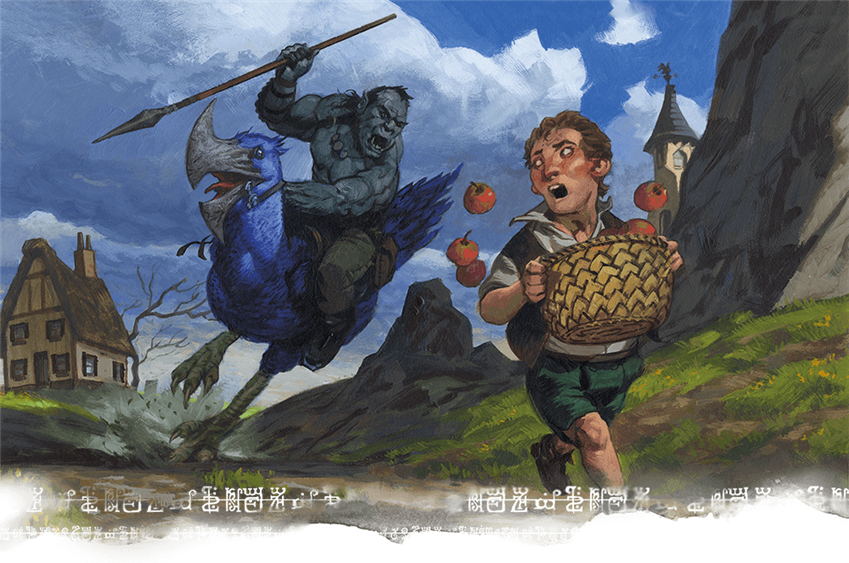
Accept Your Own Gifts
That vein of gold I mentioned above is another aspect of the creative process that bears mentioning early (and often). As we create, new pathways in our brain open up to us. We make connections. We get inspired.
A writing teacher from my past called these writerly inspirations “gifts to yourself.” You might be writing along and suddenly you have a mental flash. This could be a character, or an idea for a later encounter, or even just a word. Don’t ignore those flashes. Make a note of them somewhere that you can return to: an index card, a sticky note, a separate file, or whatever works for you that doesn’t involve too much time or effort. Then quickly get back and finish your original thought. When you reach a point where your current reservoir of writing taps itself out, go back to your notes and examine your gifts. Figure out why you might have had that flash of inspiration, and, more importantly, ruminate on how those new pieces fit into what you are working on.
Those gifts may come because your mind has already chosen a theme, or has fixated upon a new theme, and you didn’t realize it until the words accidentally appeared in your mind, or even on the page. Your subconscious mind is always working on a different level, and at a different pace, than your conscious one. These ideas may help you during your initial design, or they may be something that informs and instructs your revisions of your work. They may also solve a problem that you were having with a different part of your adventure.
Recognize Your Strengths
Unless you possess da Vinci-like genius exhibited by only a handful of people (e.g. Christopher Perkins and Jeremy Crawford), you likely have strengths and weaknesses in any project you undertake. Adventure design taps a variety of skills, ranging from writing descriptions to doing math to drawing maps, and many other tasks as well. Figure out what you are good at, and more importantly, what part of the process is most natural to you. Creating maps or other art can be difficult, but progress begets progress. If you are working on something that is not easy for you, and you cannot push through some barrier you face, move back to tackle something that is easy for you, and find a groove there. The forward progress in an entirely different area can sometimes clear away mental barriers, or give you some gifts that you can take to the task that is harder.
For me, mapping is terribly difficult. I don’t have a steady hand. My brain does not process spatial relationships well. Writing a typical adventure tends to result in dozens of crumpled sheets of graph paper littering the floor around my desk. I do, however, love to imagine scenes and put them into words. When I reach a frustration point with my mapping, I stop and attempt to use words to describe the rooms I am trying to draw. What’s in them? What are the creatures in the room doing? What features would adventurers first notice?
When I get those details painted on the page in words, it gives me the focus (and quite honestly, the courage) to go back to the graph paper and reengage the stubborn part of my brain that tries to draw a 10-foot by 10-foot room that is somehow supposed to contain seven Large-sized creatures.
I have heard many other content creators talk about this concept in other ways. Many creators love the math of adventure design: how many creatures of a particular challenge rating are needed to make this encounter hard or that encounter deadly? What creature’s ability, when paired with another creature’s abilities, add a little more spice to a fight? How much or what kinds of treasure will excite a group of players without unbalancing the campaign? These questions require a different cognitive process than, say, describing an NPC or creating a puzzle. Yet these processes can inform each other, unsticking a stubborn mental cog.
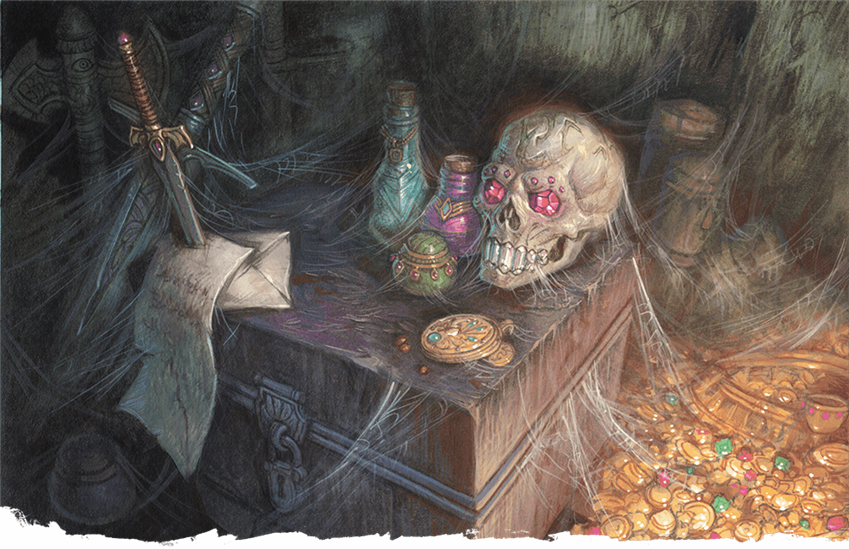
Whither from Here?
I hope the discussion so far has resonated with you, whether you want to be an adventure designer, DM, or just want to know a little more about the hobby that we love. Over the next few weeks, we’ll look at discrete aspects of game and adventure design, while at the same time putting those lessons into practice, creating pieces of an adventure that will come together into a whole by the end.
Speaking of outlines, here is a sneak peek at what topics we’ll be discussing over the course of the series. Since I hope to keep the discussion organic and flexible, there is always a chance to topics will be added, some may be combined into a single topic, or a few might be deleted entirely. But such is outlining!
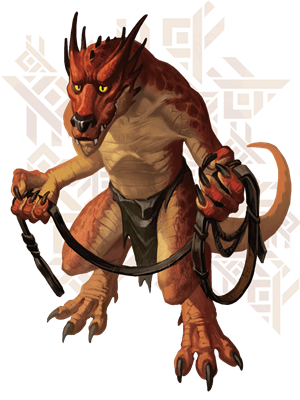
Frameworks for Adventures
- Creating an outline for an adventure, thinking about the presentation of the material in terms of the adventure scope, adventure length, adventure audience, its placement with a large campaign (or not), and more.
Plot Hooks and Opening Scenes
- An in-depth look at how to craft and implement adventure plots hooks and the opening scenes of adventures.
- Common mistakes that designers make when introducing an adventure.
- How to leverage existing game elements like backgrounds or factions to make hooks work better in an adventure.
Encounters and the Three Pillars
- A look at encounters as the building blocks of adventures.
- How to put encounters together, link them, and fit within the frameworks discussed in the previous article.
- How encounters relate to the three pillars of play: roleplaying, exploration, and combat.
- Working with the new Encounter Builder release for D&D Beyond to make it work for people who use the platform!
Boxed Text
- Dissecting boxed text, looking at how to write it and how not to write it.
- When it’s needed and when it’s not.
- Address the heated debate in design circles about whether it is needed at all!
- Discussion on details of setting, and how to find the right mix of putting in fun, flavorful, relevant details without overwhelming the DM.
Encounter Flow
- Examine the art and the craft of putting together encounters in a way that leads to organic, fun, and challenging game play.
- Touch upon the concept of story beats, and how to use different kinds of beats to keep the players happy and engaged.
- A general discussion of narrative structure, and the concepts of short and long rests as a narrative device as well as a game mechanic.
Rewards in Adventures
- How to creating adventures with rewards in mind: experience points, milestones, wealth, magic items, levels, and other kinds of rewards.
- Highlight the risks inherent in giving out too many rewards to soon, how to pace yourself, and alternate rewards that players will love that won’t unbalance your game.
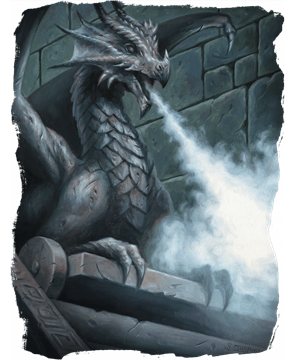
Challenges, Resolutions, and Consequences
- How to create challenges with the tools a DM has at hand: monsters, traps, hazards, obstacles, puzzles, and character choices.
- Look at how to allow different methods of resolution, and determining consequences for success and failure of those differing methods.
Thinking Like a D&D Designer
- A look at what it means to create D&D content, specifically adventures, in the larger sphere of the hobby.
- It provides tips on good writing habits, ways to make better use of your design time, and steps you can take to up your design skills.
Proofreading, Playtesting, and Publication
- Illuminate the big steps necessary in going from writing for yourself to writing for an audience.
- Cover the concepts of playtesting with outside sources, as well as polishing the piece, getting maps and art, and thinking about the content from a marketing perspective.
Homework
The next article begins our adventure design in earnest, but I need your feedback! In the comments below, talk about your experiences with adventure design, whether for your own home game or for publication. What themes have you used to constrain your design? What gifts have you left yourself that heightened the power of your design? How do you tackle designing an adventure when the blank page stares back at you?
 Shawn Merwin's professional design, development, and editing work in D&D has spanned 20 years and over 4 million words of content, ranging from third to fifth edition. His most recent credits include the Acquisitions Incorporated book, Baldur’s Gate: Descent into Avernus, and Storm Lord’s Wrath. He is also the Resource Manager for the D&D Adventurers League’s Eberron: Oracle of War campaign. Shawn hosts a weekly D&D podcast called Down with D&D, and he holds an MFA in Creative Writing from Vermont College of Fine Arts. You can follow his ramblings and musing on Twitter at @shawnmerwin.
Shawn Merwin's professional design, development, and editing work in D&D has spanned 20 years and over 4 million words of content, ranging from third to fifth edition. His most recent credits include the Acquisitions Incorporated book, Baldur’s Gate: Descent into Avernus, and Storm Lord’s Wrath. He is also the Resource Manager for the D&D Adventurers League’s Eberron: Oracle of War campaign. Shawn hosts a weekly D&D podcast called Down with D&D, and he holds an MFA in Creative Writing from Vermont College of Fine Arts. You can follow his ramblings and musing on Twitter at @shawnmerwin.








-
View User Profile
-
Send Message
Posted Sep 24, 2019Over the summer, I'm designing a campaign setting and adventure. I'm looking forward for reading them!!
-
View User Profile
-
Send Message
Posted Sep 24, 2019I’d like to know more about this process and applying it to one shots.
-
View User Profile
-
Send Message
Posted Sep 24, 2019I've only been back into playing D&D for about 4 years and I've only DM'd Adventurer's League modules and a couple of the official hardcover adventures. I seem to draw a mental blank when I try to think of even a short story for a single session adventure from scratch. I've had an idea for one encounter inspired by a monster I playtested for Kobold Press's Creature Codex and I'd like to come up with a story arc that might lead up to it as the climax.
-
View User Profile
-
Send Message
Posted Sep 24, 2019Thanks for all the great feedback, questions, sharing, and ideas so far! Two things I have noticed and want to comment on right away.
1) I am seeing a lot of "in my campaigns I create the stories based on the characters in my campaign, what they want to do, and they decisions they make." This is great, and this is absolutely what you should be doing. However, if you are writing an adventure for publication, or creating adventures where you don't know the characters, then you might not have that option. Later in the series I will definitely talk about ways to hook characters even if you don't know the characters.
2) Some people are talking about campaign arcs and long-term campaign planning. These are worthy topics, and while I will probably touch on them somewhat throughout the course of the series, but I am going to try to keep my focus strictly on creating adventures. If people are still reading them at the end, maybe I will see about going wider and talking about topics like worldbuilding and campaign design in relation to building adventures.
-
View User Profile
-
Send Message
Posted Sep 25, 2019I'm very excited about this series. I've found that I'm best at designing NPCs so whenever I get stuck, I usually create a new character or return to an underdeveloped one and imagine how they might shake up the plot.
-
View User Profile
-
Send Message
Posted Sep 25, 2019Adventures ARE the game. All that is going to happen will happen in this framework. In my 40+ years of RPG GMing I have learned to create opportunities not plot-lines. Opportunities for game-interaction cause players to LEAN IN to the table. When the players are leaning in to the game the GM MUST to be ready to capitalize. This is why I have found that a well prepared adventure is a series of opportunities for the players to BE their character in the game and that means that DICE ARE ROLLING!. A key is to KNOW that the Story is secondary to the GAME. In other words an RPG adventure is a series of memorable GAME encounters (social, combat, environmental, etc...) that BECOME a STORY.
Gamers talk about the epic MOMENTS their characters were part of; hardly ever do they mention the great story the GM told. It's the EPIC moments. The Crits! Adventures MUST have opportunities for MANY of these.
Thanks for the great ideas. I wait for more!
-
View User Profile
-
Send Message
Posted Sep 25, 2019Oh, thank you 🙏 ! This series is exactly what I need! Crafting stories aren’t really a problem for me, but I have no experience and frankly no clue how to build even decent encounters and the math behind it. And basically the logic behind encounters/battles/technical stuff in general. (But hey, backstory? World lore? I’m your girl. 😂)
And to be honest, I will never stop learning how to write great plots.
I live off examples, I’m looking forward to future articles!
-
View User Profile
-
Send Message
Posted Sep 25, 2019This seems to be the series that I didn’t realize I was yearning for.
Looking forward to the coming installments, sire.
-
View User Profile
-
Send Message
Posted Sep 25, 2019This is going to be a great series!
I tend not to really even start an adventure with a blank page. If I don’t have a solid scene in mind of adventurers interacting with an NPC, or environment that I can sketch out, I don’t even start a file for it. I guess in the parlance of this article, that would be my initial gift. But I don’t worry about wordsmithing that first line. If I imagine a scene where adventurers meet an imp and a quasit who pal around and are on the run with stolen goods, even if I have full imagery of where they are, who these fiends are, how this meeting furthers a larger story, I just write “the party meets an imp and quasit who ran into them while on the run with stolen goods.” Once I’ve got that simple thought on page, the words flow easily enough to build the scene with details or encounters from either before or after that scene, and I will have overwritten my initial words with something else as a result of what was built off those initial words.
-
View User Profile
-
Send Message
Posted Sep 25, 2019I've been adventuring for twenty years (with a massive hiatus in the middle). My party has always leaned towards self-created adventures almost exclusively, sometimes successfully, sometimes not so much.
As such, my own creations in the beginning tended toward the "railroad" method of putting characters on a course and directing the players with a heavy hand. I find this is a mistake bred from over preparing. When creating, and ultimately DMing, an adventure or campaign, the more one prepares and plans the less organic it becomes. Naturally, we roll with this pitfall because gaming is ultimately fun, no matter how constricting the storyline might become.
The latest adventure started with a lot of prep, and was originally conceived as a e4. When we upgraded to 5e, it begged a second look. I opted to run it for our first 5e foray, so I upgraded it. Again, I fell into the over prepared pitfall. The epiphony (and reason I'm writing this), came later as we played through the adventure over the course of seven sessions. Eventually, I stopped adhering strictly to the "script", instead improvising on the fly when needed, which was why what started as a simple "Stop the crazed treant" ended with the party befriending him and ultimately using his tree awakening ability to infiltrate a gnomish seige engine.
As amaetuer adventure designers, it seems the majority of us tend to get stuck in a "publication" mindset; that everything needs to be accounted for and buttoned up prior to playing, and that's that. Not so! As amateurs, we have the flexibility professionals do not. Hence, if you're stuck on a plot point, or you don't find it fun or likable, use the tools in the manuel to change it - on the fly of need be.
That's why the ending of my latest adventure, which started with a pet fledgling dragon, ended with a crime scene between a drider and a gnomish inventor instead.
-
View User Profile
-
Send Message
Posted Sep 25, 2019I am looking forward to the next installments of this series! I am working on a campaign and have hit a couple roadblocks. I want the background story/main idea to move forward but know full well that my players may choose to go in completely different directions. I don't want it to be a guided single lane adventure that their choices have no bearing on. Keeping them invested in the main story while also giving them the freedom to explore as they see fit is hard! Easy enough to do on the spot DMing...more difficult to put on paper for publishing/other DMs. Cant wait!
-
View User Profile
-
Send Message
Posted Sep 25, 2019This is awesome! Please make more posts like this, I know the Descent into Avernus based material was to promote the new book, which I get. Going forward, more helpful DM tips from the people making these wonderful stories would be superb!
-
View User Profile
-
Send Message
Posted Sep 26, 2019The island holds a dark magical power in the caves, that the pirates serve, they are bringing their hoards of treasure in search of power of their own from a being they discovered while looking for a hideout to lay low and stash their treasure.
Or the being could appear to be a normal pirate to them and be sort of a pirate king, a leader who promises they will build a fleet so big that all the seas will be theirs.
Perhaps the pirates seek to take over a nearby area and claim their own bay to fill with their armada.
Maybe at the pirate leader serves another being, a Illithid, or even a beholder (depending on player level and level of fantasy in the theme). Or even a governor or leader of a city, who uses the pirates to instill fear into the people of the land, and asks for protection money from the people. this can introduce interesting means of communication the pirates have with the governor/king/lord, do they use ravens/doves? Magical walkie-talkies?
One thing I've learned in making stories, is that having a bigger bad guy, that the guy you just beat works for, is always a solid way for you party to continue with that story arc, while forcing a break in the story, by making them look for clues, while including the other characters back stories into the story as well.
ask your self these questions, what happened to the artificer with amnesia? who did what to him? why? why didn't they outright kill him? did he hit his head running away from something and fell? Easiest thing to do is to steal all those answers from movies, video games, history. Watch pirates of the Caribbean, but put on a bit of a twist to the plots from something else you have read so that the PCs don't just assume you stole it.
There is no shame in borrowing ideas from other stories, rather it is the most time saving way to produce new material. Add your own extra curve-ball to the story; maybe the pirates stealing from the city are doing it because the city is full of rich people and there are far poorer people in need.(Robin Hood). Maybe a creature from another world/realm/reality is mind controlling these pirates who are actually just normal fishermen / sailors; it's always fun to through a world shattering change to the story arc when the player enter the final room and it turns out its empty with just an artifact that opens a portal to another plane. on the other side does an insane creature sit plotting his planes for revenge for the eradication of his army that your players just whipped out. What did the village ever do to him any way? Is he a half rok whos tusks were made fun of in his youth? and elf who is angry for the death of their betrothed? A human who made a deal with a devil, for all the riches he could ever want, if only he destroyed this small inconvenient village?
Sorry i think i began to ramble, building an open world will do that to a person.
I thoroughly enjoy watching youtube videos by AJ Pickett and also MrRhexx. they have great videos about more in depth information about monsters that you wont find in the monster Manuel. After watching just small pieces of their videos, you will find that ideas will spring forth on how to incorporate them into your world.
-Do. Or do not. There is no try.
-
View User Profile
-
Send Message
Posted Sep 26, 2019I have one or two themes for adventures designed in every nation in my campaign.
For instance, in the country of festivals, Galliblee, travel and adventure are the themes so I make my quests based around ideas like unlocking or facilitating travel to new places, different modes of travel, or encountering individuals that have wandered in from a long way away (I once had a githyanki corpse that was killed by a giant axebeak as part of an encounter). The first quest they did allowed them to obtain a freedom of travel pass to get past the toll roads on the Kingdom road without a fee.
My elven nation is themes around ancestors and heroes, my tiefling nation is themed around divinity and sin, my dwarven nation is themed around freedom, and my human empire is themed around the tyranny of reality.
-
View User Profile
-
Send Message
Posted Sep 26, 2019I've only been paying D&D on and off for a year now (scheduling is difficult) and have never ran a game before. Despite that, I've been really inspired to start the long process of creating a homebrew world to eventually play somewhere down the line. This series couldn't have started at a better time and I think the same principles are more than applicable to something larger like a campaign. Looking froward to reading more! Extremely helpful and I agree, mapping is hard!
I'd love to hear about your process for how to create enough clues for PCs to find and the issues of making them not too easy or obvious?
-
View User Profile
-
Send Message
Posted Sep 26, 2019This is EXACTLY what I have been looking for.
For the past year I have been using a Pinterest board to collect components, inspiration, etc. for an adventure I want to create.
I am looking forward to this!
Thanks!
-
View User Profile
-
Send Message
Posted Sep 26, 2019I'm excited to read and write along!!
-
View User Profile
-
Send Message
Posted Sep 26, 2019Playing with a lot of friends & family who have never done DnD or tabletop RPGs before, I like to draw themes from specific movies or video games that they like, and I build my theme more around how to make an adventure feel familiar but not plagiarized from any one particular thing. I've found that it helps the individual players to imagine their own objectives and contribute meaningfully to the story, because they have seen something like it. One person really likes smooth talking, con artist movies, so I built a heist adventure around that idea. I looked at those movies and noted a boiled down version of key events, objectives, and character archetypes to craft that adventure. I've only been playing and DMing a couple of years though, so I'm looking forward to reading this series!
-
View User Profile
-
Send Message
Posted Sep 26, 2019I really like your advise about fixating on an idea. I did this with a forest adventure and have developed So many ideas for it. I would love to publish it some day. I will defiantly be reading your future articles to learn how to design it.
Can't wait!
-
View User Profile
-
Send Message
Posted Sep 27, 2019I'm really excited for this series. I've been wanting to do more adventure design for a long time, just as a way to do something structured with my creative energy.
One thing I always get hung up on is the size of the world. I usually do homebrew worlds and I've started two or three different ones now (with a lot of shared elements across and between each), and I just get totally overwhelmed trying to figure out how gods and magic and all relate to the world and I lose track of the story elements that would actually make all this meaningful.
SO, I'm looking forward to discussions of how to constrain yourself and be purposeful in adventure building.